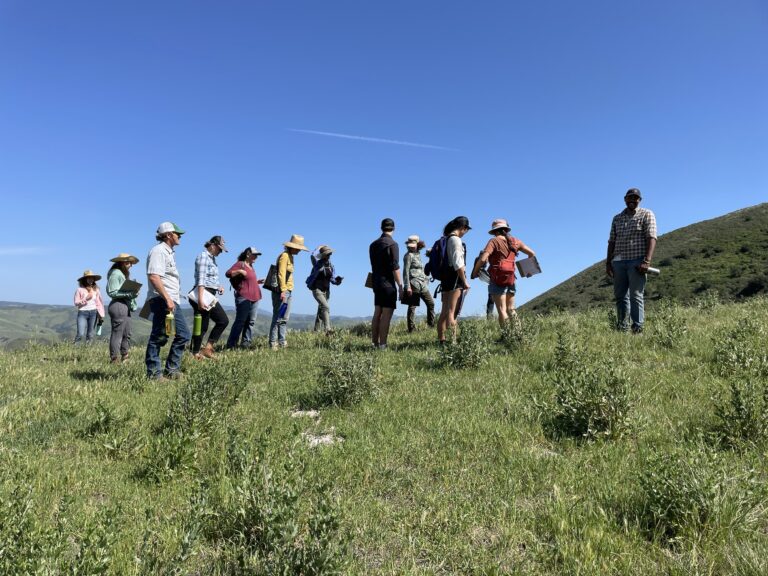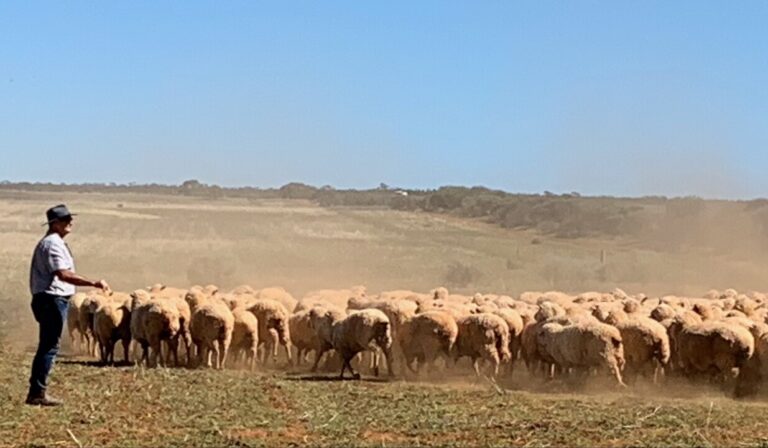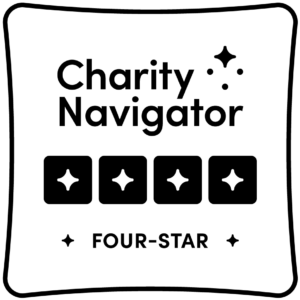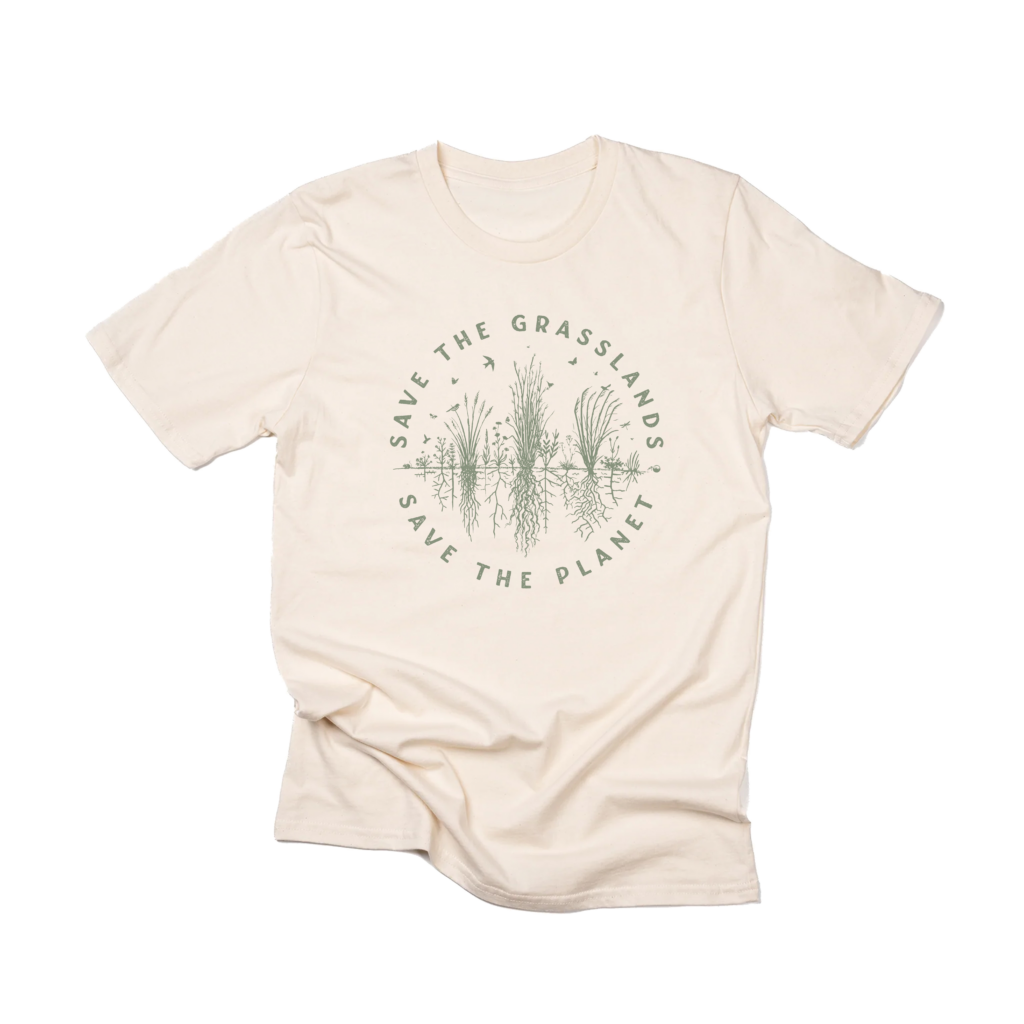At the Epicenter’s director Seleyn DeYarus recently invited Daniela Ibarra-Howell, Co-founder & CEO of Savory Institute into an open-forum Q&A as part of the Women Leading Regeneration Power Hour Series.
This Power Hour Q&A session followed the recent release of At The Epicenter’s Regenerative Voices™ Elevating Stories Activating Change Podcast Episode 15 with Daniela and provided a unique opportunity for anyone to ask Daniela questions about her work and her unique expertise on holistic management and regenerative agriculture.
Is there a minimum size to be a hub? and would market gardening also qualify?
A Savory Hub is led by an entrepreneur that desires to bring change to their region through Holistic Management training, implementation support and the unveiling of opportunities to accelerate and foster the regenerative community. Savory and its network focus on the implementation of holistic grasslands and livestock management and therefore works mostly with pastoralists, ranchers, and farmers that introduce livestock into their operation. That is our genius. However, Holistic Management can be used as a design and decision making framework at many levels.
What can consumers do on a local level to get involved beyond buying these products? Is there a way to get involved in policy and government lobbying for example?
Consumers that would like to lobby or get into policy may want to go visit a regenerative farm or ranch (our Hubs would love to host you or we can point you in the right direction) and learn what it means to regenerate soils, and manage to increase biological diversity, and improve water cycles. It is all about holistic (vs reductionist) human management.
When we align with Nature’s principles, Nature responds with abundance. Understand what it means to do this work, day in and day out, what it takes to produce food and fiber in this more beautiful way, understand the barriers, and then become their voice in policy/lobby situations.
However, ultimately, your food and fiber choices will have to be congruent with your values and the outcomes you want for the health and resilience of people, land, wildlife, and climate. When signals are aligned (i.e. you buy what you want farmers to produce) then markets will adjust and contribute to the change… and then policies will follow public opinion and voice.
What would you recommend to an OLDER, determined person not born into agriculture/farming but interested in getting into regeneration.. other than by marrying a farmer?
Ha ha! That’s a good option. We have a program, our Regenerating Members, through which you gain access to education, webinars with the Savory Institute and Savory Network, access to a community platform for learning and networking, etc. Also, members help in different ways, from volunteering time with their nearest Hub, to sharing their learnings with their communities and schools, clubs, etc.
Savory Institute provides assets for them to use in presentations, inspirational conversations with Holistic Managers, Hub leaders, Allan Savory, and others. Finally, many also join us at our Annual Network Gatherings where Savory Institute, Hubs, Accredited Professionals, and members come together to celebrate and learn from each other. This year we missed it – it was going to be hosted by our Australia Hub in NSW, and COVID got in the way. It will be held virtually in late 2020.
What is your perspective on the best way to increase consumer (eater or wearer) awareness and engage in regeneration?
I am a fan of distributed approaches: many regenerative farmers telling their stories. We do a lot of storytelling in the regenerative space, we could do more. The science and the data is always required (for credibility) but it never changes hearts. Stories do. Many authentic stories through social media, and through the marketing efforts of small and big brands (watch out for greenwashing now that regenerative is the new buzz word).
This is why Savory created the Land to Market Program which uses scientific data from our Ecological Outcome Verification (EOV) protocol as the intel that supports the claim of regeneration by land managers. Watch the videos in these links and share them! Our market partners are getting closer to the regenerative producers in our network, they are learning with their hearts and, if the system allows them to, they will begin designing for more than volumes and efficiencies, they will start designing sourcing for land and human health, for beauty and community, for abundance and resilience. If they do commit and consumers support this direction with their purchases, then, their big marketing machines can also candidly educate.
Also, if we could get to schools early on with the right information, and Ag colleges with the right information and research (remember just like with policy, many educational institutions are funded by the Ag and Food industries) that would accelerate the shift. Educational institutions need to shift, too.
How much is this regenerative approach being used in the UK? I’m just thinking about some of the farmers I know…the old-fashioned, quite stubborn type of farmer, who aren’t open to change. How would you work with them?
That is a big reality everywhere! UK is increasingly adopting HM and regenerative practices. 3LM is our Hub there. There are many incredible leaders of regenerative ag in the UK. The younger generations are eager to change things, and more curious. And climate change will leave little option for them apart from shifting management.
I’d say rather than spending much time and energy trying to convince those who will not change, work with those eager and enthusiastic and let their work speak for itself and inspire others
Given that the global food system unfortunately does not yet reflect this regenerative vision that is playing out on the local level – how do you mobilize this change to address the largest players, the giant food corporations? Do you see a role for a globalized, comprehensive regulating framework?
We are working with large and small food and fashion brands. There are different models of change. Some believe that the large corporations and players need to be part of the change if we are to scale regenerative agriculture. But it is very difficult for them, because they and their whole systems and structures across the industries’ supply chains are designed for volumes, and efficiencies and small profit per unit.
Anything that threatens volume or efficiency outcomes results in financial losses. Shareholders will not allow that. At least not until they understand the whole picture. They need to redesign their whole system. It is like the Titanic, knowing it is about to crash, and still not being able to move fast enough. They know that in a few years, business as usual will not be good business. It already isn’t. They are trying to figure it out, and to learn. They are buying the smaller regenerative brands (the speed boats) in many cases at a loss, just to learn and see what in that DNA can be passed on to the big Titanic.
Not so translatable, though. Some are investing their CSR budgets into learning and supporting farmers, and sourcing when possible. We see some of our partner brands supporting the Land to Market Program really committed to this needed transformation.
My vision and model for change is redesign for smaller, local/regional, grassroots, beautiful, resilient, and invest in better value networks (there are trillions of dollars out there looking for a place to land), invest in capacity building … create mutualistic value among all nodes in the network, humanize, become closer, elevate.
Eventually, when investments have been made (by investors, institutions and people), flows of money will go to our local farms and ranches, food production and fiber production will go hand in hand with stewardship, being a farmer and land steward will be a respected, profitable, and distinguished occupation, and communities will invest in nutritious food that healed the land and water and climate, and we will be healthy, and policy and markets will be aligned…then the conversation about the cost of food will be irrelevant. It will be good business for big and small.
Ultimately, it will probably be a combination of grassroots and top down, big and small. But, as long as we continue to purchase degenerative food and fashion, the market will continue to produce that.
Outside of grazing, in supporting community context, what other outcomes are being identified as top regenerative focus areas?
Land/Climate: biological diversity; soil health, microbiology and carbon, water cycle health (how much water is absorbed and retained in the soil supporting life, vs. evaporating or running off creating issues downstream)
Community: Social indicators of wellbeing – this is less explored but more effort and focus is being put into understanding these outcomes
Financial: Profitability at the farm level, activation of the local economy, philanthropic and impact investment shifts. Slow Money’s SOIL initiative (Slow Opportunities for Investing Locally) is a beautiful example of what finance can do for community and land health.
Policy: Smaller states and countries are more readily able to influence policy, working closely with the regenerative community. Good examples of states and countries actively seeking changes in policy design: VT, New Zealand, Uruguay, Costa Rica.
What is the key to getting farmers or ranchers who have been raised with the conventional ag mindset to become curious about holistic management?
We have seen some people never able or interested in changing. We have seen some that changed when the kids brought new ideas; we have seen some shifting when they were in deep pain or trouble (financial crisis, about to lose the farm, kids leaving…in other regions of the world emigration and violence). With regenerative being a much more active conversation, and an enticing one that people are excited about, and one that youth is embracing, combined with the awareness of reductionist design and management being one key culprit, both for land and people, holistic management becomes a logical next step to explore.
Again, holistic management as a framework to design, make decisions and act holistically, based on your values and unique context, and a deep understanding of ecosystem function and health. Then you can make your choices, and learn how to implement them, and practice the needed skills. Learning is always life giving. It is getting in the growth mindset and not feeling shame for having done things in ways that did not result in abundance and health…there is the opportunity to change until our last day on Earth!
What opportunities financial/promotional are there for people putting regenerative practices on their farm? We are starting with hopes of becoming a savory influencer in 2 years but struggling on infrastructure
Infrastructure is a design decision. Holistic Management helps you shift management with what you have. Immediately you will see outcomes of increased productivity and profits, and then you invest in the first phase of infrastructure development that is informed by a holistic land plan. You shift mindset and design, you plan and implement your activities and your business, including your finances, in ways that bring abundance.
Then you invest your increased profit in your weak link (fence, or livestock, or education, or team/human alignment, etc). This is the process that helps you invest in what we will take you to the next level of health. When folks embark in the regenerative journey, and invest in knowledge and change mindset, there is commitment. You want to change and improve. You want to measure that improvement. You want to observe keenly and adjust swiftly as the land and animals give you feedback. Farmers and ranchers worldwide have been supported in the early stages with grants, or financial incentives.
That varies with region, but the biggest financial reward comes with years of increased abundance, resilience and profitability. As young ranchers taking over the management of our family’s ranch in Colorado, USA, my husband and I were able to holistically manage the land and design our enterprises to be profitable, reinvest a bit of that profit every year, and improve the land and its carrying capacity (the amount of forage and therefore animals we can run) 2.5 times on average. It’s like we bought another ranch! It pays off.
What interventions could our schools be making to help kids grow up with a complexity mindset that primes them to think holistically? Not just the future farmers, but future eaters?
Wouldn’t that be awesome??? It takes a teacher or someone from within championing for programs like this. Historically HM educators have worked closely with Universities (Chico State and Cal Poly in California; Michigan State University and Western Colorado University are both Savory Hubs; TAFE vocational school in Australia, etc).
Hub leaders are now interested in developing programs in their demonstration sites for schools and colleges. Our Campus outside of Denver (the West Bijou Ranch) will have programs for Front Range students and we are designing a gap year or exchange program with our international Hubs for young students to get hands-on experience in a variety of contexts. It will take teachers with curiosity and commitment, administrators willing to experiment, parents asking for more of this type of education in the schools. Not always easy.
Youth is demanding more real life experiential education – that is what it takes. Organizations like Quivira, Young Farmers Coalition, and Savory are dedicated to providing some of these opportunities. More are needed.
How is the best way for groups, Quivira Coalition, Holistic Management International, Savory Institute, American Grassfed Association work together to get ranchers educated to make these changes?
All these groups and organizations bring great value to the regenerative communities in their own unique formats and programs. Sometimes it makes sense to do things together, and sometimes is best to offer a wide menu of options and approaches. All these organizations overlap and synergize, and in being distributed and unique in their offerings, I think they do better for the community than a one size fits all collaboration.
Collaboration is a very strategic decision, to be made in context, holistically. To mindfully collaborate, one needs to allocate resources and commit to processes. There needs to be time to develop trust and share information and learn about each other. There is a great desire among organizations worldwide to be seen as collaborative. In many cases this has resulted in a bunch of logos living together on a website and nothing more.
There is great value in true collaboration, when it makes sense, and for a clear reason and outcome. Organizations have their own “genius and strengths”, their unique constituencies and geographic focus, defined scopes of work, their specific strategic direction, and structures which took work and resources to develop, their mandates and mission, their vision and culture, and their own budgets allocated to their journeys.
Just saying “let’s collaborate” does not necessarily result in meaningful synergies. If there is a specific initiative that calls for a collaboration to amplify their impact (a campaign, a program) that would be better served by working together than separately, then by all means.
Savory collaborates with its global partners, Hubs and their teams who implement our work in their contexts. And we partner with global NGOs, funding partners, and market partners that are highly “complementary” in their missions and operational needs with our programs and value proposition. Together we go further, it is more fun, and can be more efficient. Knowing the right partners to walk with at the different stages of each organization’s journey is a great part of our fiduciary responsibility.
Are there any farms managed under “holistic management” plus biodynamic practices? If yes, could you comment a little bit on the results they are having?
Holistic Management helps decide and implement practices that fit the context of the people and the land. If a Holistic Manager decides to use biodynamic principles, and if they have livestock and plan the grazing holistically using the Holistic Planned Grazing (HPG) methodology, I promise you, the outcomes will be positive for land and health.
Is it hard for farmers and ranchers to get off herbicides and synthetic fertilizers?
Yes. As Joel Salatin says if you stop doing something, you need to replace it with something else. A lot of it is design and management. Maybe you used chickens instead of pesticides. Holistic managers often plan grazing by chickens (birds) at the right time to break the cycle of a pest. One of the checks in the Holistic framework is “biological weak link”, to address a problem species (too many or too few) which helps you understand when you need to address the weak link and hit it there to diminish the number, or nurture it there to increase numbers.
For that reason, partnerships with research institutions and conservation organizations is very important. You can not manage what you don’t know. When you know what you have on your farm, what you want there, what is getting in the way…then you can manage your tools to bring harmony. Instead of herbicides to control weeds, you may need to plant cover crops or use mulch to cover the ground. Again, these are tools and ideas that need to be decided in context of each situation.
You can mulch a garden, or use cover crops on a farm, but will never “mulch” or use cover crops in a big ranch. However, you can use your livestock properly managed, plan to leave enough “plant residue” to trample and create ground cover, and create conditions for different species of plants to manifest.
Remember pests and weeds are expressions (symptoms) of the poor health of the ecosystem processes. Killing them simplifies the system even more, and they come back with a vengeance. Address the underlying conditions (root causes – bare ground, mono crop, etc) and some other more positive outcomes will ensue.
Is there pushback against regen ag from the agrochemical industry?
I assume there is a big threat in regenerative ag for the agrochemical industry. An agriculture that heals the land and people, leaves the chemical industries in a position of reinventing themselves. And look what a wonderful opportunity that would be! If all those trillions of dollars could be invested in business propositions that support land and human health regeneration and resilience!
What are the main bottlenecks for expansion of holistic management? Is it lack land managers signing on to the systems, consultants to design and consult landowners, regulatory limitations or markets looking for regenerative products etc.?
It is expanding more rapidly than I have seen in my professional life. Conditions are ripe. Climate change urgency, awareness, younger generations’ culture and values (less about material possessions and more about meaningful lives and healing the Earth and climate, etc.), these conversations happening more and more at the policy level, market engagement. Savory and its network, as well as many others, have created conditions for scale – we are super excited about what is happening.
Each of these markers represents thousands of producers and flywheels. Markets are responding and investing. I think we are about to reach that tipping point in which the early adopters are coming (after the innovators took the risk and established the proof of concept).
There will always be barriers. I believe the biggest one is our own mindset. When we decide it is time to change, because it is the most important thing we can do with our lives to live better and leave a better legacy, the barriers dissolve, we are resourceful and figure it out.
Has regenerative agriculture ever been considered for wild mustangs?
Yes. Management of wildlife in fragmented landscapes is a huge challenge. Population growth management and restrictions by governments, etc. It can be done I believe, if there was a business case or political will.





